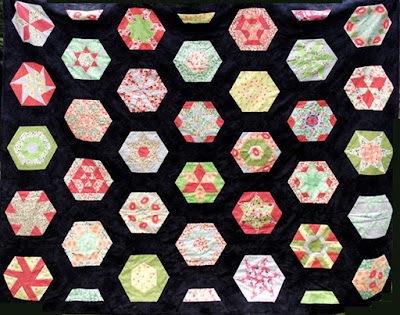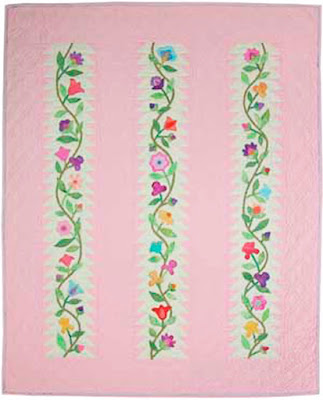Top in the Whig's Defeat design,
Turkey red and a fugitive blue. About 1900.
What did people call these inexpensive solid cottons with a low thread count?
Maybe tobacco cloth?
Late winter in 1907 was time for Breckenridge, Kentucky,
tobacco farmers to buy their tobacco cloth
for the spring crop.
Tobacco cloth is a gauze used to tent over young tobacco plants to shield them from too much sun.
This photo from the Library of Congress is from 1940, and shows a field in Connecticut. Apparently farmers make tents from plastic now.
H. D. Reddicks's store used the words Tobacco Bunting or Tobacco Cloth
advertising a sale on the 2-1/2 cent cloth: 2 Cents in 1915.
Competitor S. Marcus advertised the following month:
"We are unable to mention all of the many items in our
store such as Homespuns, Sheeting, Tobacco Cloth, etc."
The question is whether everybody in Kingstree knew that tobacco cloth was a cheap cotton for domestic use, in patchwork, aprons, curtains etc.
Or whether everybody knew the stores were talking about unbleached tobacco cloth to hang over their
plants.
Or both.
Katy at KatyQuilts paid $9 for this old top
made from some low quality cotton. You could almost read through the white
She washed it,
fixed it up and is quilting it now:
Louis Harmuth's 1915 edition of Fairchild's Dictionary of Textiles described four uses for tobacco cloth.
- wrapping tobacco [perhaps he'd never seen a tobacco field]
- antiseptic gauze
- printed drapery [light-weight cretonne perhaps]
- flags [bunting]
Tobacco cloth was
3 cents a yard when check homespuns were 12-1/2 cents and
higher quality percales cost 19 cents and 24 cents.
In 1922 a fashion note from the New York Tribune suggested
a Russian look. The pictured garment was "blond tobacco cloth
trimmed with steel rings."
In 1949 a New York home economics publication gave advice
on stitching inexpensive curtains from"sheers, such as tobacco cloth."
The Montgomery Ward catalog in 1942 sold:
"In 8-yard cuts: bleached...Tobacco Cloth GOOD— Thread Count 22 x 18."
Pat Sloan sez:
"Most quilt shop quality fabric is made with a thread count of 75 [x 75]."
Read more here:
I'd certainly like to come across an ad that described tobacco cloth in colors. Or an interview with a Southerner who remembered people making quilts from tobacco cloth. I've seen discussions of using tobacco sacks to make patchwork, but they are talking about sacking fabric like sugar or flour sacks...
...small pieces of sacking fabric.
Mrs. Bill Stagg shows a quilt made from tobacco sacks which she ripped up,
dyed, and pieced. Pie Town, New Mexico, 1940.
Russell Lee Photograph. Library of Congress.
The North Carolina project did interview a woman born in 1908, daughter of a tobacco farmer, who remembered using tobacco cloth in family quilts, but she was not talking about the patchwork:
"In Thelma's opinion a now nearly vanished material 'tobacco cloth,' provided the best batting because it was the softest....Thelma recycled this cover by washing it and carefully spreading it evenly to create batting."
North Carolina Quilts, page 128.
I found an intriguing flag quilt at a site in Texas. The Bonham Public Library displayed this quilt with the family story that it was a tobacco sack quilt made by Texan Lois Graham. I looked for seams in those stripes, thinking "That's a good use for small tobacco sacks. You piece them into a stripe"....but there are no seams in those stripes. The stripes appear to be cut from yardage.
Did family memory confuse the words "tobacco cloth" with "tobacco sack?"
Remember, I am from New York City. I don't know a thing about tobacco cloth except what I read in old books and newspapers. You Southern readers may have a few things to add to the discussion. Please comment.
Here's a another post I wrote on Southern cloth in quilts.
http://barbarabrackman.blogspot.com/2017/02/southern-quilt-style-cut-from-same-cloth.html
http://barbarabrackman.blogspot.com/2017/02/southern-quilt-style-cut-from-same-cloth.html























































